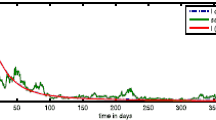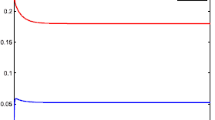Abstract.
A disease transmission model of SEIRS type with exponential demographic structure is formulated. All newborns are assumed susceptible, there is a natural death rate constant, and an excess death rate constant for infective individuals. Latent and immune periods are assumed to be constants, and the force of infection is assumed to be of the standard form, namely proportional to I(t)/N(t) where N(t) is the total (variable) population size and I(t) is the size of the infective population. The model consists of a set of integro-differential equations. Stability of the disease free proportion equilibrium, and existence, uniqueness, and stability of an endemic proportion equilibrium, are investigated. The stability results are stated in terms of a key threshold parameter. More detailed analyses are given for two cases, the SEIS model (with no immune period), and the SIRS model (with no latent period). Several threshold parameters quantify the two ways that the disease can be controlled, by forcing the number or the proportion of infectives to zero.
Similar content being viewed by others
Author information
Authors and Affiliations
Additional information
Received 8 May 1995; received in revised form 7 November 1995
Rights and permissions
About this article
Cite this article
Cooke, K., van den Driessche, P. Analysis of an SEIRS epidemic model with two delays. J Math Biol 35, 240–260 (1996). https://doi.org/10.1007/s002850050051
Issue Date:
DOI: https://doi.org/10.1007/s002850050051




